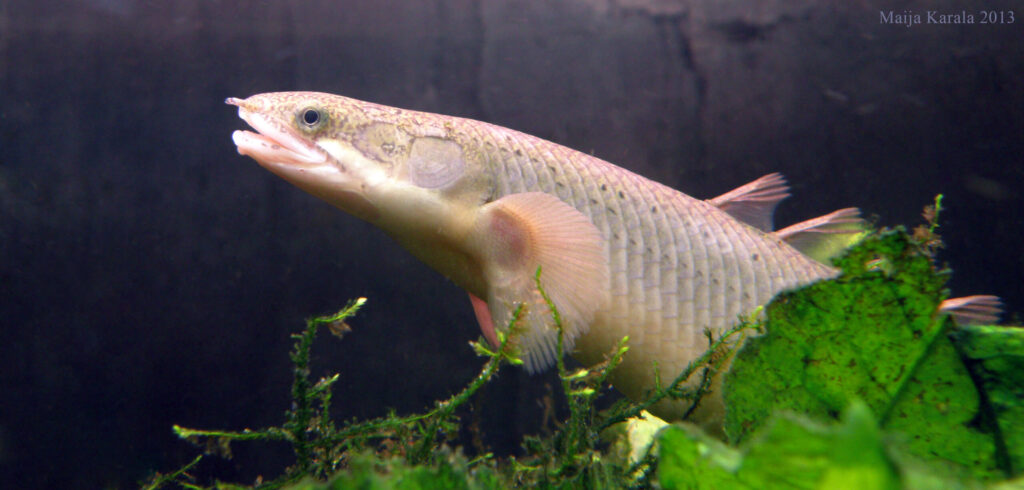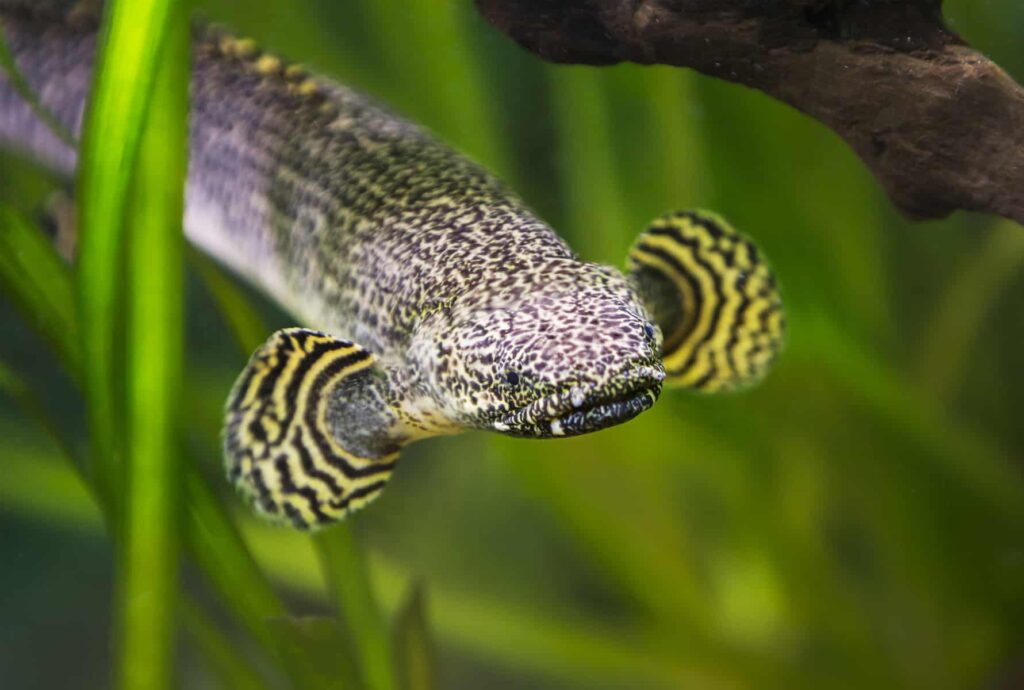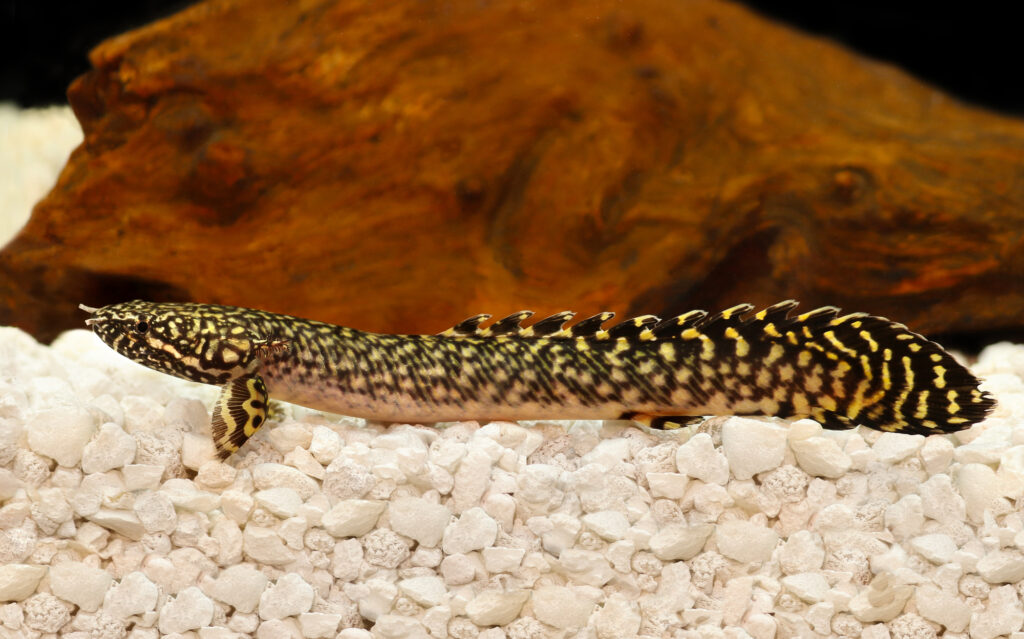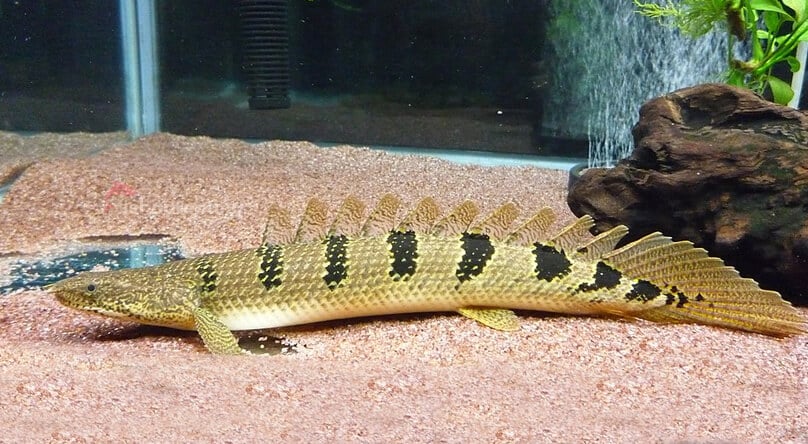The bichir fish, also known as the Polypterus, is a prehistoric-looking species that has been around for over 400 million years. These fish are fascinating creatures that have adapted to survive in a variety of environments, including swamps, rivers, and lakes. In this article, we will take a closer look at the bichir fish and provide some tips on how to care for these amazing fish.
Appearance
Bichir fish have a distinctive appearance, with a long, eel-like body covered in bony scales. They have a flattened head with a pointed snout and small eyes that are set high on their head. Bichir fish come in a variety of colors, including green, brown, and gray, with mottled or spotted patterns that vary from fish to fish.
Behavior
Bichir fish are primarily nocturnal and spend most of their time hiding in caves, crevices, or under rocks during the day. They are slow-moving fish that are capable of breathing air through a lung-like organ called a swim bladder, allowing them to survive in oxygen-deprived environments.
Care
Bichir fish require a minimum tank size of 75 gallons, with plenty of hiding places and rocky areas to replicate their natural habitat. They prefer water temperatures between 75 and 82 degrees Fahrenheit, with a pH between 6.5 and 7.5. It’s important to provide a sandy substrate and plenty of caves and crevices for these fish to explore and hide in.
Bichir fish are primarily carnivorous and should be fed a varied diet of high-quality pellets, flakes, and frozen or live foods such as brine shrimp or bloodworms. It’s important to avoid overfeeding, as these fish can be prone to obesity and other health issues.
Breeding
Breeding bichir fish can be a challenging task, as they are known to be solitary and territorial fish. It’s recommended to keep a group of juvenile fish together and allow them to form pairs as they mature. Once a pair has formed, they can be moved to a separate breeding tank with a sandy substrate and plenty of hiding places.
Bichir fish are known to be bubble nest builders, meaning that they will build a nest on the surface of the water using bubbles and plant material. Once the eggs have been fertilized, the male will guard the nest while the female guards the surrounding area. Once the fry have hatched, they can be fed newly hatched brine shrimp or finely ground flakes.
Conclusion
In summary, the bichir fish is a fascinating and unique species that requires specific care and attention. While they may be challenging to breed and maintain, their prehistoric appearance and fascinating behavior make them a rewarding addition to any aquarium. With proper care and attention, these fish can live for up to 20 years in captivity, providing years of enjoyment and entertainment.














![]()
